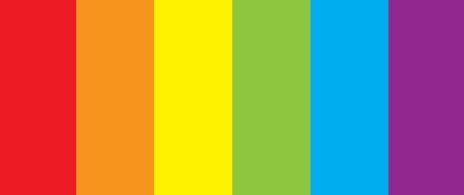Send a powerful message with colorful packaging


You know to wear rain boots and carry an umbrella when local weather girl, Stormy Clearweather foresees dark clouds approaching. You know the milk is bad when the predicted expiration date has passed, saving your almost-not-so-lucky charms from being drenched with foulness. But more important than saving your hair from precipitation-induced frizz or being halted before guzzling sour milk, is becoming a color psychologist and trend analyzer so that you know which color can best embody your product.
In the April issue of GCI Magazine, Chris Pandis explains the complex role color plays in determining effective product packaging in, The Somewhat Mysterious and Altogether Ambiguous Art of Selecting the ˜Right Color. Pandis brings to light the fact that choosing a color to personify your brand isn't easy. Become aware of the components involved in building a successful color campaign and learn the strategic tactics necessary to make the most out of your product's hue.
Color psychology is an essential element in the color equation. Check out our post on how standard colors affect consumers. Color impressions can come to the surface through personal preferences or unnoticed personality characteristics. Like a secret inkblot test we've all been subliminally subjected to.
Imagine that your dentist's examination room is painted a light purple. This color projects a sense of calmness that evokes photographic memories of beach side sunsets in your mind. This gives way to an out-of-place relaxation, given that you are there for a painful root canal. The presence of purple communicated the message it was intended to: relaxation in an often uncomfortable space. The same process can be applied to product packaging.
Color perception is critical when it comes to building a strong brand that stands out in a crowd. A powerful tool, when utilized correctly it can visually reinforce a product's purpose or it can result in damage to a brand. Take into consideration what you want your product to communicate before making a decision on packaging color.
For instance, if you were marketing a line of replica antique perfume bottles you would be advised to stay away from tech savvy, modern colors such as a lustrous black paired with bright blues and purples. The majesty of the bottle's classic form would clash with such loud shades. It's like archaic beauty meets contemporary sleekness, the colors send a mixed message to consumers; they just don't mesh. When paired with appropriately similar items, a color combination like neon pinks, greens and oranges can project a carefree fun feel while deep greens and reds can communicate eco-friendly awareness, making your all natural product seem even greener.
World happenings are often responsible for shifting color trends as well. In hard economic times consumers may be looking for practical and safe products (warm reds, soft browns), while during a technology boom they crave innovation (shiny black, neon colors). Choosing a color that matches a societal stance could propel your product to surpass the competition.
So, that all holy right color you've been searching for? It doesn't exist. Just like Stormy Clearweather's forecasts, your color choice might not be spot on. If you study the market and find a niche for your product, you'll make the right decision. Evaluate your demographic, discover what they're looking for, and then use those societal trends as a base for your color choice.
Remember that a prosperous color choice isn't made exceptional through color alone, the product and color combination must connect with consumers to succeed. Check out our colorful collection of amber, cobalt blue and green packaging or if you're interested in large quantities, read our post on Pantone and call us to begin work on a custom color project!